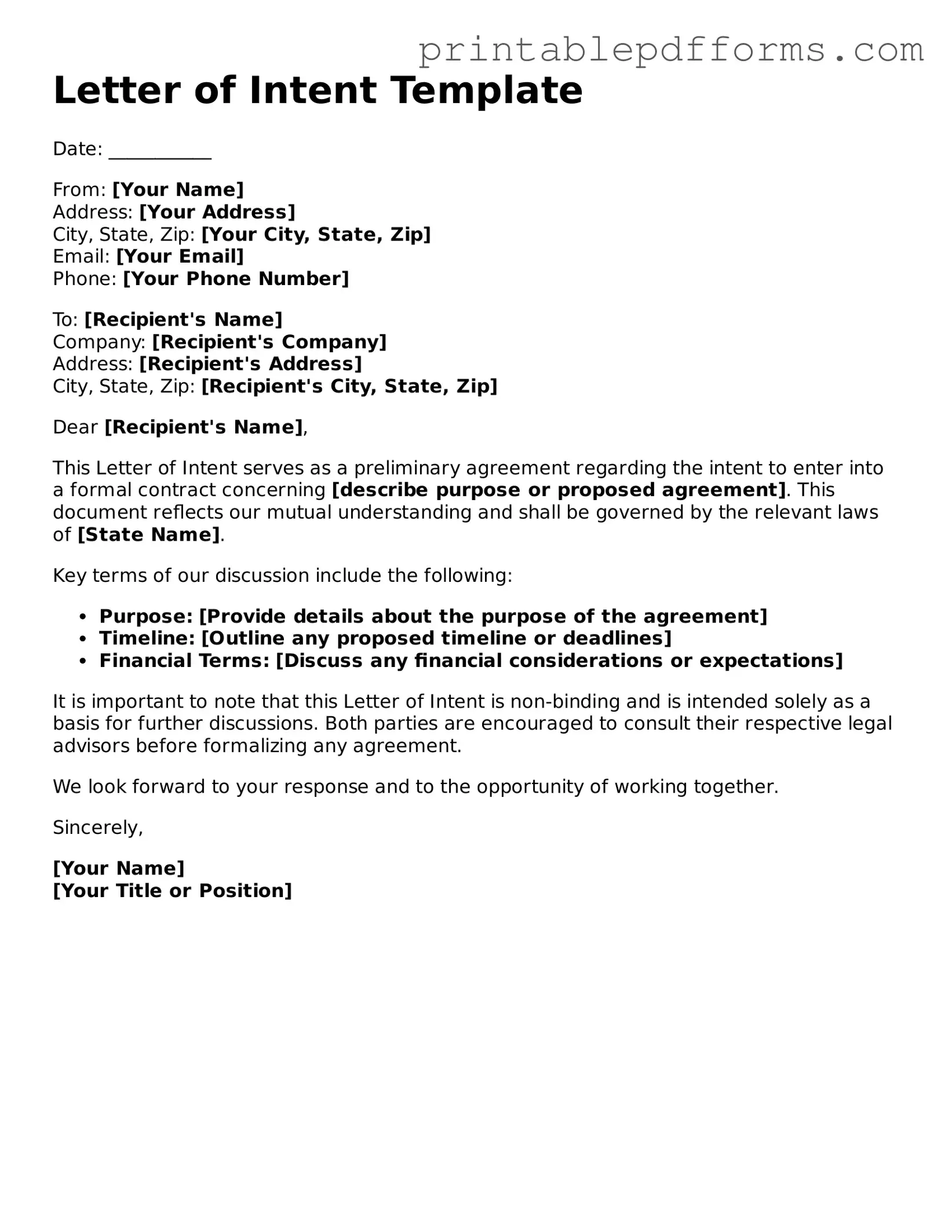Letter of Intent Template
Date: ___________
From: [Your Name]
Address: [Your Address]
City, State, Zip: [Your City, State, Zip]
Email: [Your Email]
Phone: [Your Phone Number]
To: [Recipient's Name]
Company: [Recipient's Company]
Address: [Recipient's Address]
City, State, Zip: [Recipient's City, State, Zip]
Dear [Recipient's Name],
This Letter of Intent serves as a preliminary agreement regarding the intent to enter into a formal contract concerning [describe purpose or proposed agreement]. This document reflects our mutual understanding and shall be governed by the relevant laws of [State Name].
Key terms of our discussion include the following:
- Purpose: [Provide details about the purpose of the agreement]
- Timeline: [Outline any proposed timeline or deadlines]
- Financial Terms: [Discuss any financial considerations or expectations]
It is important to note that this Letter of Intent is non-binding and is intended solely as a basis for further discussions. Both parties are encouraged to consult their respective legal advisors before formalizing any agreement.
We look forward to your response and to the opportunity of working together.
Sincerely,
[Your Name]
[Your Title or Position]
